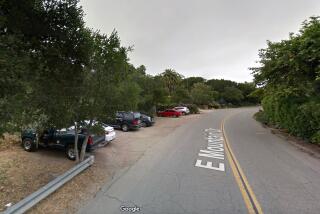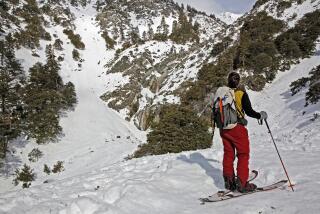Opinion: Why mountain bikes must be kept off the Pacific Crest Trail
To the editor: I’ve been mountain biking since 1989 and really love riding on great single-track trails, but mountain bikes do not belong on the Pacific Crest Trail and I’m sure many other wilderness trails. (“GOP lures some mountain bike groups in its push to roll back protections for public land,” Dec. 19)
Mountain biking is incompatible with the narrow and often very rough trails throughout our wilderness areas, where the raw conditions put people into a challenge with nature. On some trails it is difficult for hikers just to pass each other.
Based on my own experience, I can say the legislation by Rep. Tom McClintock (R-Elk Grove) to open wilderness areas to bikes will put too many fast-riding cyclists on the trails, where they will confront hikers and pack trains. Allowing bikes to access wilderness areas will surely prompt demands from other mechanized vehicle riders, which would result in widened trails and displaced wildlife.
This idea is the epitome of ignorance and selfishness. There are plenty of existing mountain bike trails all over the country.
Dean Blau, Van Nuys
..
To the editor: The 1964 Wilderness Act banned “mechanical transport.” At the time, that meant motors, ski lifts, oar carts and wagons carrying passive passengers or materials. It was the Cold War, and Congress wanted to encourage recreation that required strength, endurance, self reliance and risk.
In 1965, the U.S. Forest Service defined “mechanical transport” as “propelled by a non-living power source.” When mountain bikes were invented in the 1970s, the Sierra Club talked the Forest Service into banning them in 1977. In 1981, the ban was rescinded and bikes were allowed.
Bicyclists rode in wilderness areas off and on for 20 years. Pressure was again brought to bear. In 1984, based on animosity and bias, bicyclists were again banned.
McClintock’s H.R. 1349 would allow bikes on some wilderness trails as decided by the local land manager. Bicyclists deserve fact-based decision making. This is good policy and deserves bipartisan support.
Jim Hasenauer, Woodland Hills
..
To the editor: I work on trails in the Santa Cruz Mountains, a popular mountain biking destination. Most of the trail repairs we make have to do with heavy erosion caused by bikes (foot traffic does far less damage).
Making bikeable trail structures eats into our budget, as a bridge or boardwalk for pedestrians can be a foot wide, while for bikes it must be at least twice that or require double the building material.
Our forests are still recovering from logging a century ago. Soil is a fragile resource easily damaged by bike tires. Our waterways suffer from excessive sediment washed out of gullied trails and roads, to the detriment of fish and amphibians.
Allowing bikes on the Pacific Crest Trail will have similar effects, putting a new burden on ecosystems and trail crews. I worked these trails with mountain bikers who understood that there are places cyclists should not go.
William Yates, Culver City
..
To the editor: I am a Forest Service volunteer who spends a lot of time maintaining trails in wilderness areas. We use only hand tools to keep these paths safe and open for visitors.
Trails are built with natural local materials. We make this effort because we believe in the importance of wilderness and giving people the opportunity to visit places that are wild and natural.
Our wilderness areas are the envy of the world. Let us hope that our representatives retain the same high level of protection for these areas and not be influenced by special interest groups that seek to diminish this important part of our American heritage.
Alan Coles, Long Beach
Follow the Opinion section on Twitter @latimesopinion and Facebook
More to Read
A cure for the common opinion
Get thought-provoking perspectives with our weekly newsletter.
You may occasionally receive promotional content from the Los Angeles Times.






